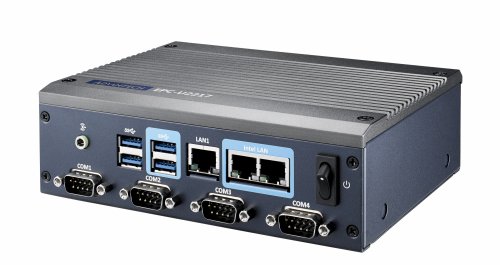Kontron expands COMe Type 6 boards with AMD Ryzen processors
Posted by Nick Flaherty
615
Advantech launches palm-sized PC with Atom 3900 for IoT
Posted by Nick Flaherty
178
A
Atmosic chooses CEVA for battery-free Bluetooth 5 IoT chip
Posted by Nick Flaherty
118
I
Infineon teams with Klika Tech on smart buildings
Posted by Nick Flaherty
103
A
AMD gets back into the embedded market with focus on mini PCs
Posted by Nick Flaherty
102
C
CodeGuru gives automated code reviews and application performance recommendations
Posted by Nick Flaherty
87
R
Renesas consolidates its energy harvesting controller family
Posted by Nick Flaherty
87
P
PICMG finalises pin out for high performance COM modules
Posted by Nick Flaherty
70

50GOPS at 50mW for IoT AI edge processor
Posted by Nick Flaherty
68

Packet-based power ... Teslas's Berlin plans ... Battery minerals from deep sea nodules ... Power supply for immersed computing
Posted by Nick Flaherty
62

Mini-ITX board has 14nm Coffee Lake six core processor
Posted by Nick Flaherty
57

Smart hub combines wired and wireless protocols
Posted by Nick Flaherty
53

Smallest 100nF capacitors for 5G phones ... startup creates network of power packs ... Nexeon silicon anode patents
Posted by Nick Flaherty
53
T
ThreadX sale sets up Microsoft vs Amazon IoT showdown
Posted by Nick Flaherty
43

Quad core Smart Audio board adds Google Assistant
Posted by Nick Flaherty
39

Hybrid wafers with GaN on Si ... Spin computing slashes power ... In-panel batteries to boost storage
Posted by Nick Flaherty
31

Wireless charging tags and pacemakers ... GaN transistors for space and avionics
Posted by Nick Flaherty
30

Kontron Box PC industrial controllers use Intel Core and Xeon E processors
Posted by Nick Flaherty
29
A
Adlink teams for machine vision AI at the edge
Posted by Nick Flaherty
22

 .
.  .
.  .
.  .
.  .
.  .
.  .
.  .
.  .
.  .
.  .
.  .
.  .
. 
 .
.  .
.  .
.  .
.  .
.  .
.  .
. 
 .
.  .
.  .
.  .
.  .
.  .
.  .
.  .
.  .
.  .
. 

 .
.  .
.  .
.  .
.  .
.  .
.  .
.  .
.  .
.  .
.  .
.